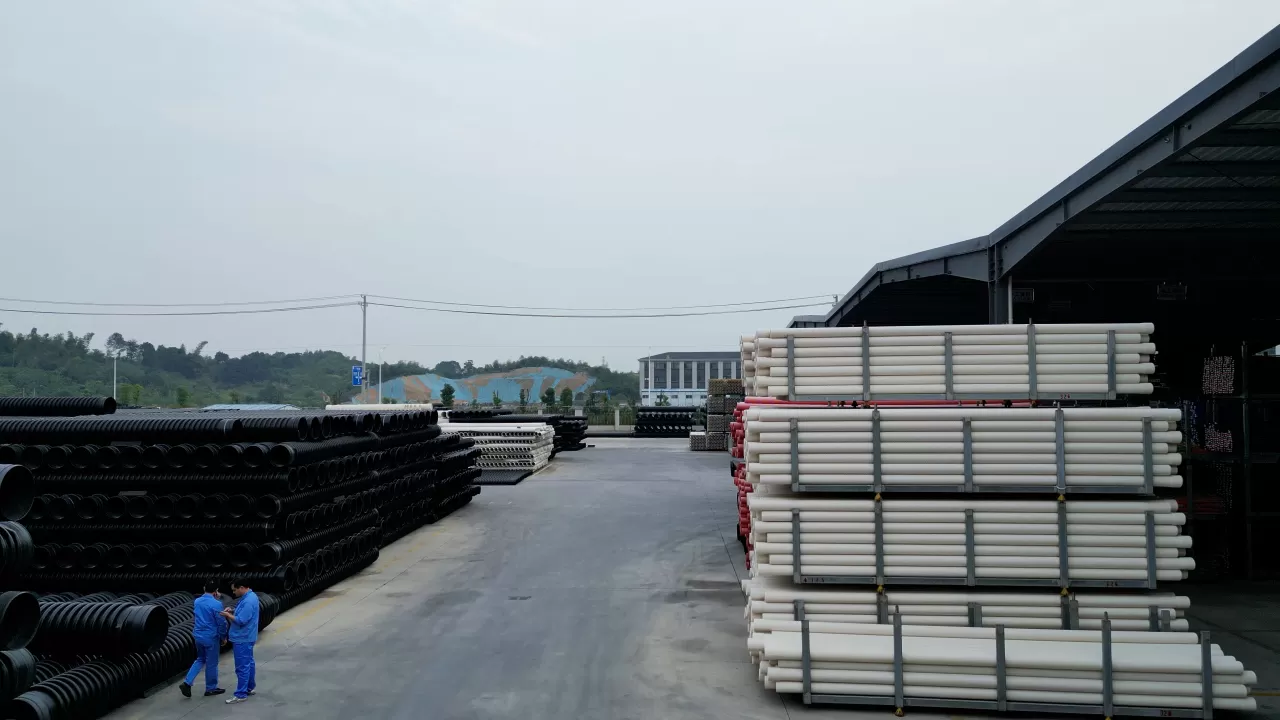AD PVC drainage pipe construction guide, 1. Construction preparation (1) Requirements for ordinary steel pipes for reserved holes 1. Material and appearance: The reserved holes are made of ordinary steel pipes, and the surface of the steel pipes should be free from significant rust, depression and distortion. When the thickness of the pipe wall is δ 3.5mm, the depth of the scar on the surface of the steel pipe shall not exceed 0.5mm. When the thickness of the pipe wall is δ 3.5mm, the depth of the scar shall not exceed 1mm. (2) Pre-embedded water-stop pipe fittings Acceptance 1. Specification matching: According to the design drawings, purchase the water-stop pipe fittings of the corresponding specifications. 2. Special customization: If the design thickness of the floor slab is greater than [X] mm (or the thickness of the filling layer is greater than [X] mm, it needs to be pre-buried in place at one time), and it needs to be customized to the manufacturer separately. 3. Dimension inspection: When the pipe fittings enter the field, use a vernier caliper to measure the wall thickness and specifications of the pipe fittings to ensure that they are consistent with the specifications of the installed pipeline materials. After passing, they can be accepted and put into storage. (3) Quality requirements for the reserved hole sealing template 1. Template material: The reserved hole template is used to seal the top cover of the reserved hole mold. Waste film-coated plates can be selected, but there must be no defects such as holes, glue opening and serious deformation. 2. Template thickness: The thickness of the template should not be less than 10mm. 2. Construction process and operation points (1) Construction process Pre-embedded water-stop joint pipe fittings inspection Pre-embedded water-stop joint pipe fittings seal the pipe mouth Civil formwork inspection Transfer drainage pipe installation Positioning scribing drainage pipe fittings Fixed quality inspection Acceptance (rectification) Concrete pouring (inspection and protection) Drainage pipe installation (2) Operation points 1. Shaped water-stop joint purchase and inspection, according to the design drawings, purchase the water-stop joint of the corresponding specification. When the floor design thickness is greater than [X] mm (or the thickness of the filling layer is greater than [X] mm, it needs to be pre-buried in place at one time), contact the manufacturer for customization. After the water-stop joint enters the site, use a vernier caliper to measure the wall thickness and specifications of the pipe fittings. After confirming that it is consistent with the specifications of the installed pipeline materials, go through the warehousing procedures. 2. Pre-embedded water-stop joint pipe top pipe sealing: After acceptance of qualified water-stop joint, seal its top with tape, note that the tape must not be pasted to the contact part of the pipe and concrete. After inspection, store it in the warehouse for backup. 3. Civil formwork inspection and handover: After the civil formwork is installed, the installation technician cooperates with the civil technician to accept the formwork. The inspection content includes whether the elevation and size deviation meet the requirements, and whether there are any legacy problems affecting the subsequent installation and construction. After the indicators are tested qualified, the next process can be carried out. 4. Drainage pipe installation positioning and scribing: After the template acceptance is passed, use a steel ruler to accurately measure the positioning size of the drainage pipe according to the template size, and mark the pre-embedded position of the pipe on the template with paint or scribing pen. For rows of pipes, it is necessary to draw points with elastic lines. 5. Drainage pipe fittings fixing: According to the drawn positioning points and lines, place the water stop joint to the corresponding point, use iron nails to pass through the reserved holes on the water stop joint, and fix the water stop joint on the template. After checking that it is firmly fixed and not loose, hand over to the next process for construction. 6. Quality inspection and acceptance (rectification): After the civil beam and plate steel reinforcement binding is completed, self-check the position size and fixing of the water stop joint again. If any problems are found, rectify them in time. After passing the self-inspection, report it to the supervision unit for acceptance. Only after passing the acceptance can the next process be carried out. 7. Concrete pouring (inspection and protection): When pouring beam and slab concrete for civil construction, arrange a special person to be responsible for the protection and inspection of the finished product of the pre-embedded water stop joint. Once deformation is found, restore it immediately; if the seal is damaged, clean it up in time to prevent the concrete from being difficult to clean after solidification. 8. Drainage pipe installation: Before the drainage pipe is installed, insert test (the gap of [specific gap value] mm is reserved for pipes and fittings as required) and mark it well. The sawed pipe mouth should be kept straight and free of burrs. Use the brush to evenly apply the glue (first apply the socket, the thickness is controlled at [specific thickness value] mm, then apply the nozzle, apply evenly, no omission), then align the nozzle with the socket, slowly insert it into the mark (rotation angle is not more than 1/3 turn), wipe the extruded residual glue in time.


